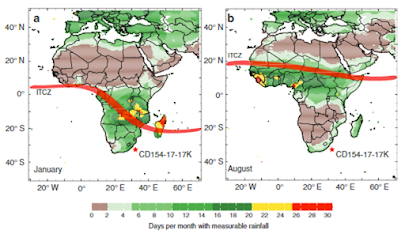Africa's Food Crisis
146 million people currently living in Africa face food insecurity. That is more than double the UK’s population. Take a moment to let that sink in…
How and why has such a horrific statistic been created and what are its implications?
Rising food
prices and an over-reliance on exports:
As mentioned in
the third blog, nations within Africa are importing high-value crops and
products such as cereal crops. Much of Africa’s wheat, vegetable oil and fertiliser are all imported from Russia and Ukraine. However, the ongoing war and tensions
between the countries have not only reduced their exports but has also raised
food prices significantly not only for African countries, but also other
nations in the world. Yet, the reason why many people in Africa suffer compared
to the rest of the world, is the over-reliance on importing these products and
not maintaining self sufficiency for food security. Currently, US $35 billion a year is spent importing food, whilst arguably the same money could be used to
create jobs or invest back into the agricultural economy.
Climate
Change:
Furthermore,
climate change and periods of drought are not allowing countries in the horn of
Africa to grow crops or raise livestock. Figure 1 shows how Somalia, Kenya,
Ethiopia as well as some areas in South Sudan and Tanzania are experiencing anomalous
declines in precipitation of 150 to 300 mm, causing crops to fail and livestock
to die. 22 million people are suffering because of this drought and this number
will only worsen should precipitation still not occur. Figure 2 shows how parts
of Somalia will be projected to experience famine if rainfall does not occur.
This is simply unfair – Africa produces only 3% of global greenhouse gas emissions, but it suffers the most.
Figure 2 – Food insecurity projections in Somalia.
Conflict within
Africa:
Conflict within
African nations and poor governance have further caused or exacerbated the food
crisis within the continent and caused food insecurity. Civil conflict in the
Blue Nile and Darfur regions in Sudan have led to 11.7 million people facing acute food insecurity. Poor governance and lack of economic management has also
driven inflation of 400% leaving many unable to access food. Whilst conflict
within these regions have calmed down, their impacts are still felt today.
Impacts of
food insecurity:
Often, when
thinking about the impacts of food insecurity, malnutrition and mortality are what
comes to mind. In East Africa, 12.8 million children are known to be malnourished and 7.2 million people are threatened by starvation. Food security also decreases
the mental health of individuals. Women and people living with HIV were
highlighted as the most vulnerable to poor mental health within the continent
(Trudell et al., 2021). These impacts can only be reduced once the
crisis of food is solved.
Thus, this blog
highlights how water scarcity alone is not responsible for food insecurity
within Africa. Rather, it is the combination of all the above mentioned points
interacting together and disrupting people’s livelihoods.




Comments
Post a Comment